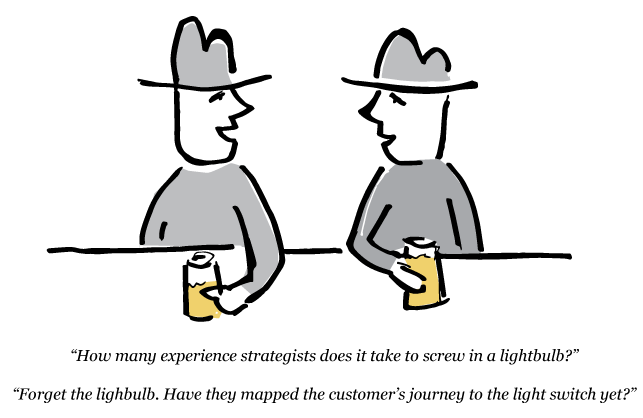What’s In A Name? Between CX and UX, A Lot
The Folly Of A UX Youth
Several years ago, when I was writing my book, The User Experience Team of One, I tucked the following footnote into an early draft:
"An alphabet soup of acronyms have been adopted as shorthand for user experience. Which one you use depends largely on what term your organization or local professional community has adopted to talk about user experience. Though they vary quite a bit, all tend to be variations on the theme of “experience.” Among them: UX (user experience), XD (experience design), UE (user experience, again), CX (customer experience), and CE (customer experience, again). Though the acronyms differ, they all pretty much refer to the same thing."
I then sent my manuscript to a handful of colleagues who had kindly volunteered to proof it. One keen reviewer spotted my footnote and immediately called me out on it. He wrote:
"I think it’s an oversimplification to say that UX and CX ‘pretty much refer to the same thing.’ Particularly in the current environment where UX is growing up and the worlds of UX and CX are starting to collide. Anyone who knows the difference between the two may find the statement a bit too much of a ‘dumbing down’ of an important distinction and set a wrong tone. I think it’s worth just making clearer that there is a distinction, although they are both essentially centered around the users and their experiences."
Oh, Yeah, They're Different
It only took a few minutes of Googling to realize that the answer to a question that it had never occurred to me to ask: Could these similarly named disciplines be different? Yes. And how. My faux pas highlights something that was true for many UX professionals then and remains true for many today: They don’t know a lot about the field of CX and where their work overlaps. But the same goes for CX professionals and how well they understand UX.
Nevertheless, firms are making simultaneous investments to enhance both of these capabilities — opening reqs for customer experience strategists to establish measurement and governance systems and set experience strategy at the same time as they hunt for user experience strategists to do user research and design and, yep, set experience strategy. And just like that, an organization finds itself with a proliferation of ideas about who the customer is, what her ideal journey should be, and what it all means for the design of products, services, and experiences.

Before firms hire cadres of CX and UX professionals, they need a plan for how these two disciplines work together. To understand the situation better, researcher Corey Stearns and I recently spent time looking into the responsibilities for both roles implied by the open reqs that companies are trying to fill. The key takeaway? CX and UX professionals have distinct but complementary skills, but at the moment, they’re not working together as much as they should.
I share more details of what we found in the Forrester CX Cast below and in the recently published report, "Bridging The CX/UX Divide."